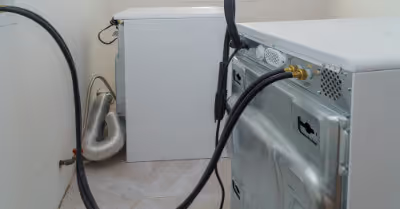Table of Contents
What Are Secured and Unsecured Loans?
Mortgages are secured loans because the lender has the right to repossess the home. Though backed by collateral, secured loans still hold the borrower responsible for the entire balance when the collateral sale is insufficient to reimburse the lender fully. To collect the difference, the mortgagor obtains a deficiency judgment, which allows it to pursue the borrower for the following expenses:
- The difference between the mortgage balance and home sale price
- All late fees
- The lender’s legal fees
- Expenses related to the foreclosure, such as filing fees
Unsecured loans, such as credit cards, have no collateral, though the lender can still pursue a court order to collect money through wage garnishments, bank levies, or property seizures.
Benefits and Disadvantages of Mortgages
You might wonder whether a mortgage loan is worthwhile. It depends on your situation.
Owning a home comes with many benefits, including appreciation, the ability to decide on improvements and repairs, and tax deductions. But a mortgage also binds you to the property for the longer term, and the costs of selling can be substantial.
Here are some of the pros and cons of mortgages:
Pros
Increased Chance of Approval (Despite Shaky Credit)
Because lenders have the home as collateral, they are willing to lend to more risky customers.
Lower Interest Rates
Collateralized loans always have lower interest rates versus unsecured debt.
Adjustability
Mortgages and other collateralized loans offer flexibility that allows you to choose the loan length and the down payment amount and make extra payments toward the principal.
Cons
Repossession
Losing the collateral can create devastating consequences, especially when it is your primary residence
Overspending
Just because you are approved for a mortgage amount does not mean you should take it. It’s important to analyze your personal financial situation carefully to avoid overspending.
Longer Terms
Mortgages are affordable in part because they allow for longer terms. Spreading payments over 20- or 30 years makes homes valued at many times your yearly earnings affordable.
How Are Homes Repossessed?
The exact process differs according to state laws. Some states require judicial foreclosures, while others allow for nonjudicial foreclosures. Judicial foreclosures take longer and are more costly.
How Does the Judicial Foreclosure Process Work?
Judicial foreclosure procedures differ to some degree depending on the state, but all states follow a similar overall process, which proceeds as follows:
The Start of a Judicial Foreclosure
In most cases, federal law prohibits lenders from starting a foreclosure until the borrower is 120 days or more past due.
This opens a window of opportunity for delinquent borrowers to either bring their accounts current or reach a repayment agreement with the lender. Because of COVID-19, lenders are under pressure by regulators to offer loan modifications, which can be done before homeowners fall more than 120 days behind or any time before the court awards the title to a new owner.
The Foreclosure Notice
Sometime after the 120-day window passes, you will receive a foreclosure notice, which takes one of these forms:
- A notice of default followed by a notice of sale
- A combined notice of default and sale
- A notice of sale, or
- A notice by publication in a newspaper and posting on the property or in a public place
Foreclosure Sale
The foreclosure notice will list a time and date for the foreclosure sale. These sales are auctions, where the home is sold to the highest bidder. In many cases, the lender will be the highest bidder and then sell the property itself.
The Redemption Period
Many states offer a redemption period. Redemption periods may give the borrower a certain amount of time to bring the loan current, a certain amount of time to come up with the entire balance, or both. The foreclosure notice will specify the redemption periods available under state law.
Eviction
Once any available redemption periods end, the court will transfer title to the highest bidder at the foreclosure sale. Once the title is transferred, the borrower will be informed of the date when they need to vacate the property.
If the former owner does not vacate the premises by this date, the new owner can file an eviction action with the county. To remove the previous owner, the court must approve the eviction and set a date for removal.
Deficiency Judgments
When the amount of collateral is insufficient to cover what the borrower owes, the lender can seek a deficiency judgment in court. This process is separate from the foreclosure. If the lender successfully obtains a deficiency judgment, it then has the right to collect the judgment through wage garnishments, bank account levies, property seizures, and other methods.
How Does the Nonjudicial Foreclosure Process Work?
Nonjudicial foreclosures require no court process. Instead, the lender simply files a notice of sale and notifies homeowners of the date they must vacate. Though lenders can opt for judicial or nonjudicial foreclosures in many jurisdictions, some states allow the borrower to opt for a judicial foreclosure. Because judicial foreclosures are more prolonged, some borrowers may benefit from them if they are attempting to save their homes. If you are facing nonjudicial foreclosure and need more time to enact a plan to keep your home, check if your state allows you to demand a judicial foreclosure.
Despite no requirement for a court order, nonjudicial foreclosures still require lenders to follow strict legal requirements. Failure to abide by these obligations invalidates the foreclosure.
Lenders Must Follow the 120-Day Requirement
As with judicial foreclosures, lenders must wait until the borrower is at least 120 days behind. Federal law requires this waiting period so that distressed borrowers can seek a loan modification. During this period, the law requires lenders to send a breach letter to the borrower when they are 30-days past due.
Sale After Notice
After the 120-day period passes, the lender files a notice of sale, which lists the date and time of the property’s auction. The country recorder creates the official record of the sale. A copy is also mailed to the borrower and published in the local newspaper. Many states have other specific notification and publishing requirements.
As with a judicial foreclosure, a third party or the lender may prevail at the auction, though the mortgager usually wins. The new owner then notifies the borrower to vacate before a specific date. If the borrower fails to leave the property, the new owner can seek an eviction.
Deficiency Judgements
Whether a lender can obtain a deficiency judgment after a nonjudicial foreclosure depends on state law. For example, California law bars deficiency judgments for nonjudicial foreclosures, a policy that helps underwater owners move past a foreclosure and possibly avoid bankruptcy. On the other hand, Michigan permits lenders to foreclose non judicially and then file a lawsuit seeking a deficiency judgment.
Recent Articles
















